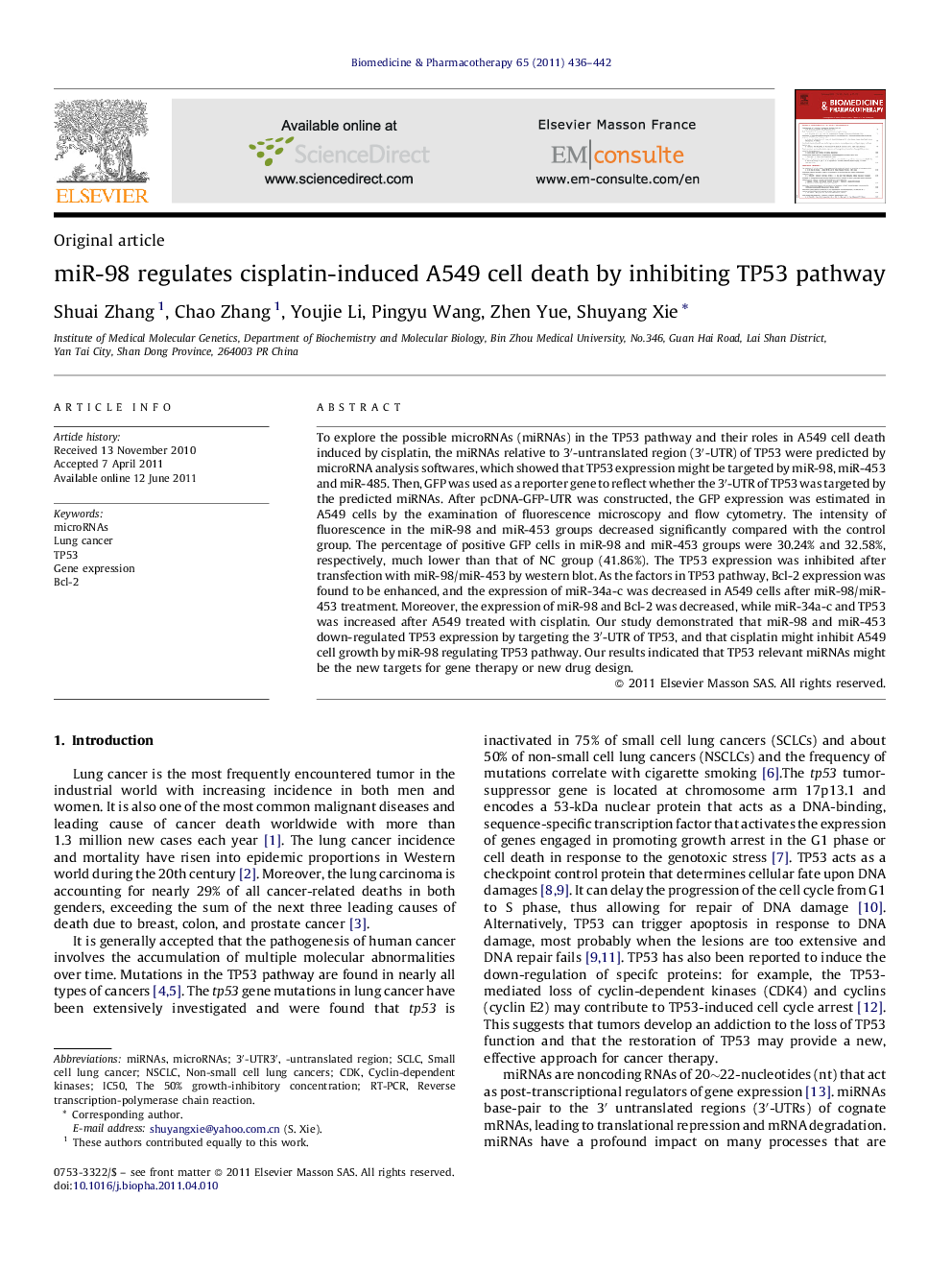| Article ID | Journal | Published Year | Pages | File Type |
|---|---|---|---|---|
| 2524521 | Biomedicine & Pharmacotherapy | 2011 | 7 Pages |
To explore the possible microRNAs (miRNAs) in the TP53 pathway and their roles in A549 cell death induced by cisplatin, the miRNAs relative to 3′-untranslated region (3′-UTR) of TP53 were predicted by microRNA analysis softwares, which showed that TP53 expression might be targeted by miR-98, miR-453 and miR-485. Then, GFP was used as a reporter gene to reflect whether the 3′-UTR of TP53 was targeted by the predicted miRNAs. After pcDNA-GFP-UTR was constructed, the GFP expression was estimated in A549 cells by the examination of fluorescence microscopy and flow cytometry. The intensity of fluorescence in the miR-98 and miR-453 groups decreased significantly compared with the control group. The percentage of positive GFP cells in miR-98 and miR-453 groups were 30.24% and 32.58%, respectively, much lower than that of NC group (41.86%). The TP53 expression was inhibited after transfection with miR-98/miR-453 by western blot. As the factors in TP53 pathway, Bcl-2 expression was found to be enhanced, and the expression of miR-34a-c was decreased in A549 cells after miR-98/miR-453 treatment. Moreover, the expression of miR-98 and Bcl-2 was decreased, while miR-34a-c and TP53 was increased after A549 treated with cisplatin. Our study demonstrated that miR-98 and miR-453 down-regulated TP53 expression by targeting the 3′-UTR of TP53, and that cisplatin might inhibit A549 cell growth by miR-98 regulating TP53 pathway. Our results indicated that TP53 relevant miRNAs might be the new targets for gene therapy or new drug design.
